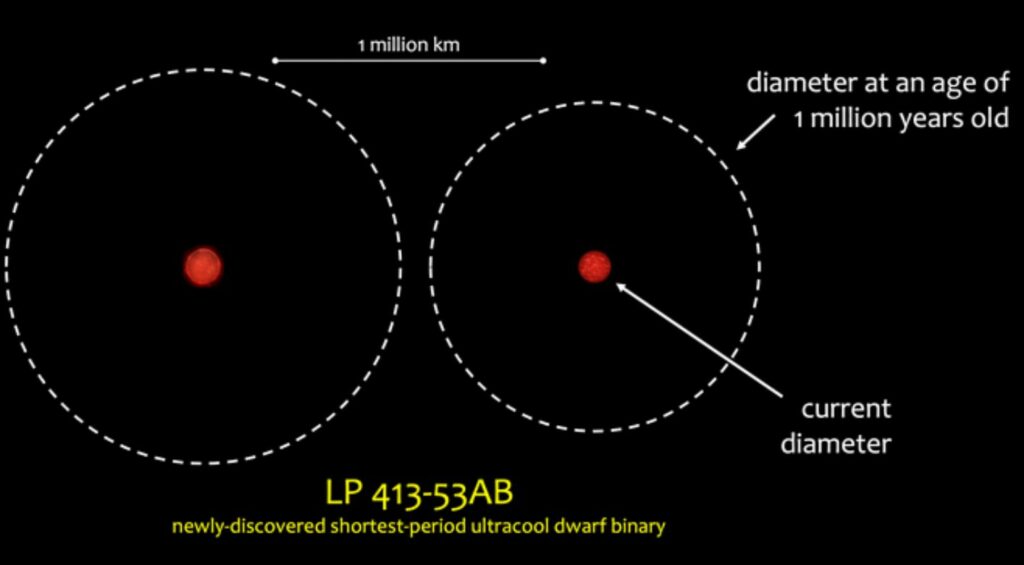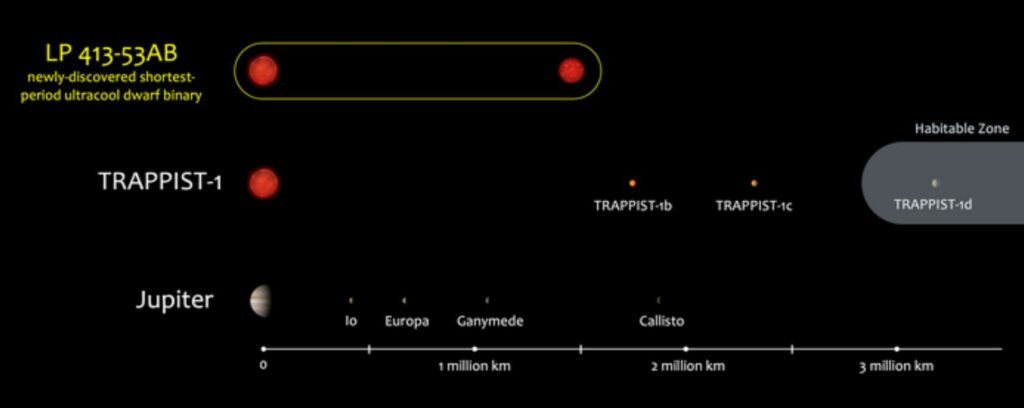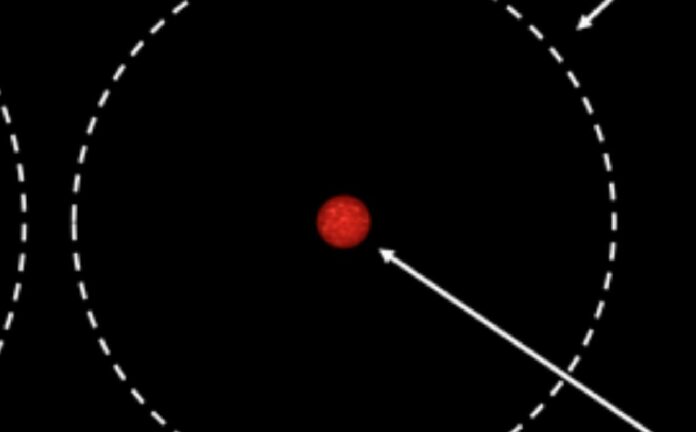An extraordinary finding in the world of astronomy reveals the closest binary star system yet discovered, with two ultracool dwarf stars revolving around each other in a remarkably short period of time. These two stars are in such proximity that a complete orbit takes less than one day on Earth, with each star experiencing a “year” in a mere 20.5 hours.
Astrophysicists from Northwestern University and the University of California, San Diego (UC San Diego) have found the most compact ultracool dwarf binary system yet seen.
Due of their proximity, it takes less than one day for the two stars to rotate around each other. To put it another way, each star’s “year” lasts just 20.5 hours.
The newly found system, called LP 413-53AB, is made up of two stars called ultracool dwarfs. These are very low-mass stars that are so cool that most of the light they give off is infrared, which makes them completely invisible to the human eye. Despite this, they are one of the most prevalent forms of stars that may be found in the cosmos.
Up until now, scientists have only found three short-period ultracool dwarf binary systems, all of which are young (up to 40 Mya).
According to estimates, LP 413-53AB is as ancient as our Sun but has a much shorter orbital period than any of the other reported ultracool dwarf binaries.
The study’s principal investigator, Chih-Chun “Dino” Hsu of Northwestern University, says, “It’s exciting to discover such an extreme system. In principle, we knew these systems should exist, but no such systems had been identified yet.”

Hsu will discuss this discovery at the 241st Meeting of the American Astronomical Society in Seattle at a press briefing today.
The lead investigator of this study, Dr. Hsu, is a postdoctoral researcher in physics and astronomy at Northwestern University’s Weinberg College of Arts and Sciences. He is also an integral member of the Center for Interdisciplinary Exploration and Research in Astrophysics (CIERA) at Northwestern. Hsu embarked on this research while pursuing his Ph.D. at the University of California, San Diego under the guidance of Professor Adam Burgasser.
The team stumbled upon an unusual binary star system while sifting through previous observations. They used an innovative algorithm that allows them to construct a detailed model of a star based on its light spectrum.
This cutting-edge technique enables scientists to determine a wide range of properties of the star, including its chemical makeup, temperature, gravity, and rotation, by analyzing the light it emits.
Additionally, it reveals the star’s motion relative to the observer, a phenomenon known as radial velocity.
Hsu saw something strange when he looked at the spectral data of LP 413-53AB. Hsu thought there was just one star in the system because early observations captured it when the stars were closely aligned and their spectral lines overlapped.
However, when the stars migrated in their orbit, the spectral lines separated into pairs and underwent opposite-direction shifts. Hsu noticed that there were in fact two stars bound in an extremely compact binary.
Hsu decided to look at the event for himself by using the powerful telescopes at the W.M. Keck Observatory. On March 13, 2022, the crew pointed the telescopes toward the constellation Taurus, which contains the binary system, and examined it for two hours. Following that, they made more observations in July, October, and December.
“When we were making this measurement, we could see things changing over a couple of minutes of observation,” Burgasser adds. “Most binaries we follow have orbit periods of years. So, you get a measurement every few months. Then, after a while, you can piece together the puzzle. With this system, we could see the spectral lines moving apart in real time. It’s amazing to see something happen in the universe on a human time scale.”

The observations supported the predictions made by Hsu’s model. About 1% of the distance between the Earth and the sun separates the two stars.
These stars would have been stacked on top of one another when they were young, around one million years ago, according to Burgasser.
The group hypothesizes that the stars may have moved in that direction as they developed or that they may have merged following the ejection of a third, now gone, stellar component. To verify these theories, further observations are required.
Hsu also said that researchers may learn more about possible habitable worlds beyond Earth by examining comparable star systems.
Any planets with liquid water on their surfaces — a necessary component to generate and maintain life — would need to be considerably closer to the star since ultracool dwarfs are much fainter and dimmer than the sun.
The habitable zone distance for LP 413-53AB, however, also happens to be the same as the star orbit, rendering the formation of habitable planets in this system unlikely.
“These ultracool dwarfs are neighbors of our sun,” says Hsu. “To identify potentially habitable hosts, it’s helpful to start with our nearby neighbors. But if close binaries are common among ultracool dwarfs, there may be few habitable worlds to be found.”
Hsu, Burgasser, and their team members want to find more ultracool dwarf binary systems to get a full data set so they can learn more about these possibilities.
Theoretical theories for the origin and development of twin stars may be bolstered by new observational evidence. Finding ultracool binary stars, however, has been a difficult task up until now.
“These systems are rare,” adds co-author Chris Theissen. “But we don’t know whether they are rare because they rarely exist or because we just don’t find them. That’s an open-ended question. Now we have one data point that we can start building on. This data had been sitting in the archive for a long time. Dino’s tool will enable us to look for more binaries like this.”
Image Credit: Adam Burgasser/University of California San Diego
